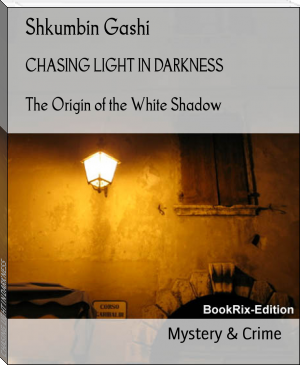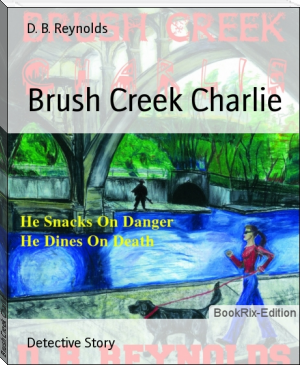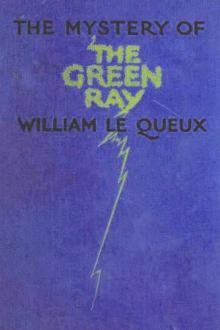The Samsara Project by David Burgess (ebook reader screen .txt) 📖

- Author: David Burgess
Book online «The Samsara Project by David Burgess (ebook reader screen .txt) 📖». Author David Burgess
“Yes, quite,” replied Martin.
“Please, sit down,” said John pointing towards a rather uncomfortable looking wooden seated chair in the corner of the cell. Martin pulled the chair over; John sat on the side of the bed.
“Has anyone spoken to you about the case?” asked John.
“Only very briefly, I have to admit that I’m not too sure I actually understand what I’ve been told. It all sounds a bit strange to me. Still, we have plenty of time to sort that out. Do you know what will happen today?”
“I have a vague idea but that’s about it. I was hoping that you would be taking care of that for me.”
“I will be. Our main aim at this hearing will be to get bail for you, that way at least you’ll be out of prison and be able to carry on with a relatively normal life until the trial.”
“Is bail likely?”
“It’s never a certainty but I’ll do my best for you. Depends a lot on what mood the magistrate is in. Unfair I know but that’s the way it is.”
There was a knock on the door then it opened. One of the custody officers entered the cell. “The magistrates are ready to hear your case now Mr. Reynolds.”
John stood up, fixed his clothes as best as he could and walked towards the door.
“I’ll see you upstairs,” said Martin.
“This way please, Mr Reynolds,” said the custody officer. John walked out of the door and back to the reception area. “I have to put the cuffs back on, hold your hands out please.”
John did as he was asked. The officer then led John up two flights of stairs and through a door that led straight into the court room. John was led to a table and told to remain standing. The custody officer removed the handcuffs and stood a few feet behind John.
“You may all be seated,” said the lead magistrate.
John looked around the court. Three magistrates were sat behind the bench, all wearing normal clothes, as was everyone else in the court. He looked towards the public gallery area and was pleased to see Geoffrey and Andrew sat there. They gave him thumbs up sign, he nodded in acknowledgement. As he looked around the rest of the gallery John noticed a few familiar faces. Sat in the gallery were three of the women Geoffrey had photographed at Suzie Reeve’s funeral. They were all sat together towards the rear of the seating area but never the less John recognised them straight away. He wondered why they were there; he hoped they did not think he had harmed Tracy in any way but then again, he reasoned with himself, they would have no way of knowing. A door opened at the rear of the court, it squeaked a little as it did and this attracted most people’s attention in the otherwise deathly quiet courtroom. John watched as DCS Hughes walked in, he quickly found an empty seat and sat down just before the proceedings started.
For the next seven minutes everything went as John had expected. He confirmed his name, address and date of birth and pleaded a very positive ‘Not Guilty’ when asked. Then John’s solicitor asked about bail for his client. The magistrates asked if the CPS had any objection to this. They did. The CPS objected on a number of grounds. Their main objection was the cold and callous way the defendant had shot Miss Tracy Rae, not once but twice. The public had to be protected from the likes of Mr Reynolds, a man who has no qualms about shooting innocent young women in cold blood could not be allowed bail and the CPS would vigorously oppose it. John’s solicitor spoke up well for him. Very well in light of the fact the two had only met just under an hour ago. The magistrate’s decision when it was announced was not unexpected. John had already resigned himself to the fact but it was none the less a crushing moment. “Bail denied.” The magistrate’s voice reverberated around the court room. Andrew and Geoffrey shook their heads in disbelief. DCS Hughes sat, motionless and the three women at the back of the court just smiled at each other. The magistrate continued, “The defendant is to be remanded to HMP Outcross and is to reappear before this court in seven days. Custody officers can now remove the defendant from the court.” With that John was taken back to the cells.
Less than five minutes after he was locked back up Martin was in the holding cell with John. “We can do a lot in seven days,” he said to John, “not least we need to play on the fact you should not have been charged with anything at all.”
“What do you mean?” asked John.
“Where is Tracy?” replied Martin, “where is the victim of this alleged shooting? How do we know that there was a shooting at all? Can you honestly tell me that live ammunition was fired from that pistol; who ever fired the pistol could have used blanks. I know you won’t like this but Tracy could have been wired with stage effects.”
John understood what Martin was saying to him.
Martin continued, “We have to unsettle the prosecution’s case, even at this early stage. We only have one aim just now and that is to get you out of prison, everything else is secondary.”
John agreed.
“Just answer me one question,” said Martin, “did you shoot Tracy Rae?”
“No,” replied John with conviction and without any hesitation.
“I believe you,” replied Martin, “I’ll keep in touch on a regular basis and arrange to visit you as soon as I have any news. Don’t do anything stupid inside and keep your nose clean.”
“They won’t even know I’m there,” replied John.
Despite the position he was in John was feeling upbeat. On his mind he knew he had not shot Tracy. John could not shoot anyone let alone the woman he was planning on spending the rest of his life with. John also thought about what Martin had said but that was quickly dismissed. Tracy would not have been part of some elaborate plot to frame him, of that he was certain.
John heard the keys opening the cell door. “Time to go;” barked the custody officer, “you know the drill by now, arms out.”
John did as he was asked and the handcuffs were put back on his wrists. He was then led out, via prisoner reception, to the movements’ wagon. Inside the wagon he was put into a small and very cramped cubicle. John had seen these wagons many times, occasionally on the road but mainly on the news with photographers jumping up with their cameras trying to get a picture of whoever was inside. Sometimes members of the public would be shouting and screaming obscenities at the occupants as it drove away, even, on some occasions, attacking the wagon. John was now grateful for the heavily blacked out glass. He knew that even though he could see out of the window no one on the outside would be able to see in. For an innocent man that was a great comfort.
John heard a banging on the metal cubicle divider. “You in there,” shouted a voice, “your first time?”
“Yes,” replied John, not too sure what to do but strangely glad of the limited conversation.
“It’s my seventh,” came the reply, “the names Dicky but everyone calls me Rigger on account of my surname being Mortice. Get it rigger mortise.”
John had to smile, even here there was humour, “I get it,” he replied, “and I’m John. Nothing fancy, just John.”
“Listen Just John, you stick with me, I’ll see you alright, show you the ropes and everything. Even an old prison hand like me has his uses. We’re going into my world now, as I can’t survive in your old world you won’t survive in your new one without help. We’ll make sure we get padded up together when we’re allocated in reception.”
“Great, thanks,” replied John, not altogether sure if that was what he wanted. What Rigger had said made sense to John, but who was Rigger and why would he want to help? John knew there was only one reason. Money or favours, the money he could probably deal with, it was the favours that bothered him.
Chapter 17
HMP Outcross was built in two thousand and five. It was a small to medium sized prison that held six hundred and twenty prisoners or up to seven hundred and ten when required. Unlike the old Victorian City prisons HMP Outcross was a modern prison built on one level. The cell blocks or to use the current politically correct term ‘residential units’ were designed as a self contained single story structure. Each unit had its own centralised hub consisting of reception and security, food servers and recreation areas. Three wings each equidistant from each other, radiated out from the hub. These wings contained the accommodation areas, shower blocks, ablutions and the main education classrooms. In all there were four hubs Alpha, Beta, Delta and Gamma. John was housed with other remand prisoners on green wing in Beta House. Here the prison regime was slightly more relaxed than the other areas as technically none of the inmates were guilty of any crime and all were still waiting for their day in court. Green wing inmates were allowed to wear their own clothes and were not required to attend any of the compulsory prison activities that the convicted men had to.
The accommodation though was exactly the same, each two man cell measured ten foot by eight foot and consisted of bunk beds, a small shared table, a fourteen inch television and a private toilet and wash facilities. There was natural light was via a window at the top of the wall but it was placed too high for anyone to see out of it. the window could be opened one and a half inches for ventilation when required. The accommodation could best be described as adequate and did allow the inmate a certain amount of privacy.
For John this was a whole new experience and not one that he was looking forward to. John’s whole experience of prison consisted of the ‘Shawshank Redemption’ and Sky TV’s ‘Prisoners Out of Control’. Despite the reassuring words from Rigger, John was feeling very uneasy. His stomach started to churn as soon as he saw the road sign ‘HMP Outcross two miles’. John wanted the next two miles to last as long as possible; he hoped the wagon would break down, that there was an accident to hold them up, anything to stop them from getting to the prison.
The rest of the journey though went very smoothly, there were no hold ups or delays. The wagon stopped at the security gate and John could clearly read the sign ‘Welcome to HMP Outcross’ then underneath the sign read ‘a part of the public sector prison service.’ “They’re trying to make the place sound like Asda,” John said out loud to himself. The wagon passed through initial security then entered a large holding yard. Gates were closed electronically behind them; the wagon then drove on to the reception centre of Beta wing.
The wagon came to a halt, the airbrakes hissed and the engine was switched off. John heard the all too familiar sound of keys opening doors, this time it was the rear doors of the wagon. Next a key was turned to
 However, all readers - sooner or later - find for themselves a literary genre that is fundamentally different from all others.
However, all readers - sooner or later - find for themselves a literary genre that is fundamentally different from all others. 




Comments (0)